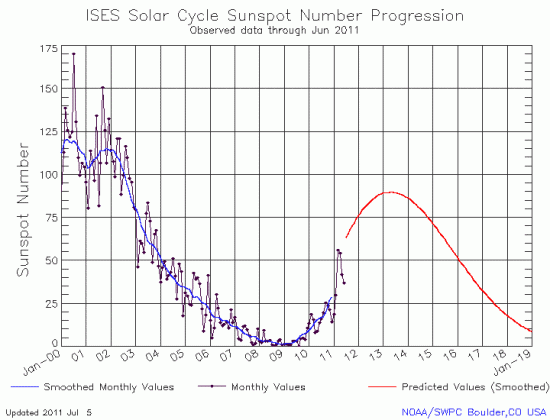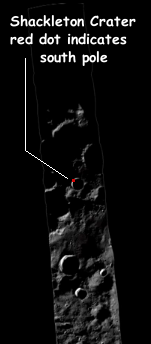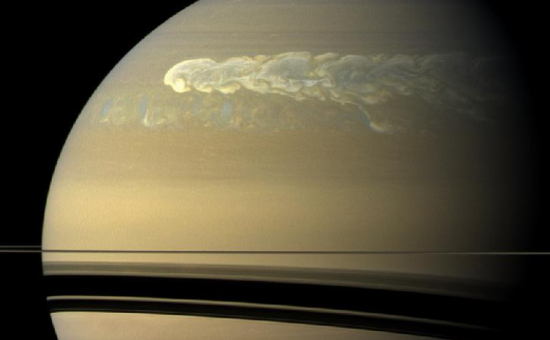Why some space junk is impossible to track
This ISS status update, dated June 28, explains why the piece of space junk that flew past the station that day was such a surprise. (Hat tip to NASA engineer James Fincannon for pointing this out to me.)
Last night at ~6:00pm EDT, NASA Houston FTC (Flight Control Team) received notification of an upcoming “red threshold” conjunction of the ISS with a piece of orbital debris (Object 82618, UNKNOWN), with a TCA (Time of Closest Approach) this morning at 8:08am EDT, – which was too late to begin planning for a DAM (Debris Avoidance Maneuver). Therefore, FTC and crew made preparations for crew sheltering in Soyuz 26S & 27S. PC (Probability of Collision) at last tracking fix (7:20am) remained in the Red box, at ~0.003, with a miss distance of 0.25 km radial, 0.375 km downtrack, 0.570 m crosstrack. The necessary reconfiguration procedures (USOS hatches closed, etc.) began 1.5 hrs before TCA (6:38am EDT), and the six crewmembers ingressed their Soyuz vehicles. At 8:08am the object cleared the ISS with no impact, and shortly thereafter the crew was given the Go for returning to the ISS. [The late notification occurred because of the high air resistance (drag) of the object (~175 times higher than ISS) which made its trajectory very sensitive to small errors in atmospheric density predictions at the current solar flux. Due to the high drag, there is no chance of a recurrence of Object 82618).] [emphasis mine]
In other words, the piece of junk was probably something like a piece of insulation, very light but with a large area, much like a sail. Thus, as it flies through the thin atmosphere at 200 to 400 miles altitude its velocity and direction can easily change, making it difficult, if not impossible, to predict its future trajectory.
The good news is that these same conditions mean that the orbit of the object will quickly decay (“due to high drag”) so that it poses no future threat to the station.
Unfortunately, there are many other objects like this in orbit, and they all pose a threat, mostly because of the difficulty of reliably predicting their orbits.
On Christmas Eve 1968 three Americans became the first humans to visit another world. What they did to celebrate was unexpected and profound, and will be remembered throughout all human history. Genesis: the Story of Apollo 8, Robert Zimmerman's classic history of humanity's first journey to another world, tells that story, and it is now available as both an ebook and an audiobook, both with a foreword by Valerie Anders and a new introduction by Robert Zimmerman.
The print edition can be purchased at Amazon or any other book seller. If you want an autographed copy the price is $60 for the hardback and $45 for the paperback, plus $8 shipping for each. Go here for purchasing details. The ebook is available everywhere for $5.99 (before discount) at amazon, or direct from my ebook publisher, ebookit you don't support the big tech companies and the author gets a bigger cut much sooner.
The audiobook is also available at all these vendors, and is also free with a 30-day trial membership to Audible.
"Not simply about one mission, [Genesis] is also the history of America's quest for the moon... Zimmerman has done a masterful job of tying disparate events together into a solid account of one of America's greatest human triumphs."--San Antonio Express-News
House proposes cutting NOAA by $103 million
More science budget news: The House today proposed cutting NOAA’s $4.59 billion budget by $103 million.
There already is some squealing about this (see the link above), but note that a $4.49 billion budget for NOAA would still be half a billion dollars more than NOAA’s 2008 budget, which is hardly what I’d call a draconian cut.
More science budget news: The House today proposed cutting NOAA’s $4.59 billion budget by $103 million.
There already is some squealing about this (see the link above), but note that a $4.49 billion budget for NOAA would still be half a billion dollars more than NOAA’s 2008 budget, which is hardly what I’d call a draconian cut.
Another Iceland volcano appears about to erupt
Another Iceland volcano, Hekla, is showing signs that it is about to erupt.
The volcano, dubbed by Icelanders in the Middle Ages as the “Gateway to Hell,” is one of Iceland’s most active, having erupted some 20 times over the past millennium, most recently on Feb. 26, 2000. It measures 4,891-feet (1,491-meters) and is located about 70 miles (110 kilometers) east of Reykjavik, not far from Eyjafjoell.
Another Iceland volcano, Hekla, is showing signs that it is about to erupt.
The volcano, dubbed by Icelanders in the Middle Ages as the “Gateway to Hell,” is one of Iceland’s most active, having erupted some 20 times over the past millennium, most recently on Feb. 26, 2000. It measures 4,891-feet (1,491-meters) and is located about 70 miles (110 kilometers) east of Reykjavik, not far from Eyjafjoell.
Now available in hardback and paperback as well as ebook!
From the press release: In this ground-breaking new history of early America, historian Robert Zimmerman not only exposes the lie behind The New York Times 1619 Project that falsely claims slavery is central to the history of the United States, he also provides profound lessons about the nature of human societies, lessons important for Americans today as well as for all future settlers on Mars and elsewhere in space.
Conscious Choice: The origins of slavery in America and why it matters today and for our future in outer space, is a riveting page-turning story that documents how slavery slowly became pervasive in the southern British colonies of North America, colonies founded by a people and culture that not only did not allow slavery but in every way were hostile to the practice.
Conscious Choice does more however. In telling the tragic history of the Virginia colony and the rise of slavery there, Zimmerman lays out the proper path for creating healthy societies in places like the Moon and Mars.
“Zimmerman’s ground-breaking history provides every future generation the basic framework for establishing new societies on other worlds. We would be wise to heed what he says.” —Robert Zubrin, founder of the Mars Society.
All editions are available at Amazon, Barnes & Noble, and all book vendors, with the ebook priced at $5.99 before discount. All editions can also be purchased direct from the ebook publisher, ebookit, in which case you don't support the big tech companies and the author gets a bigger cut much sooner.
Autographed printed copies are also available at discount directly from the author (hardback $29.95; paperback $14.95; Shipping cost for either: $6.00). Just send an email to zimmerman @ nasw dot org.
Ron Paul calls for the abolition of the TSA
House Spending Panel Flatlines NSF
More science budget news: The House proposes no budget increase for the National Science Foundation.
More science budget news: The House proposes no budget increase for the National Science Foundation.
Leaving Earth: Space Stations, Rival Superpowers, and the Quest for Interplanetary Travel, can be purchased as an ebook everywhere for only $3.99 (before discount) at amazon, Barnes & Noble, all ebook vendors, or direct from my ebook publisher, ebookit.
If you buy it from ebookit you don't support the big oppressive tech companies and I get a bigger cut much sooner.
Winner of the 2003 Eugene M. Emme Award of the American Astronautical Society.
"Leaving Earth is one of the best and certainly the most comprehensive summary of our drive into space that I have ever read. It will be invaluable to future scholars because it will tell them how the next chapter of human history opened." -- Arthur C. Clarke
House proposes to drop NASA’s budget to 2008 levels, eliminate Webb Telescope
The House today proposed cutting NASA’s budget back to 2008 levels while eliminating all funds for the James Webb Space Telescope.
As much as I’d hate to see the Webb telescope die, it has cost far more than planned, is way behind schedule, and carries a gigantic risk of failure. However, if I had a choice, I’d rather they cut the $1.95 billion for Congress’s homemade heavy-lift rocket, the program-formerly-called-Constellation. There is a much better chance that Webb will get completed, launched, and work, than there is for this improvised and impossibly costly Congressionally conceived rocket.
The House today proposed cutting NASA’s budget back to 2008 levels while eliminating all funds for the James Webb Space Telescope.
As much as I’d hate to see the Webb telescope die, it has cost far more than planned, is way behind schedule, and carries a gigantic risk of failure. However, if I had a choice, I’d rather they cut the $1.95 billion for Congress’s homemade heavy-lift rocket, the program-formerly-called-Constellation. There is a much better chance that Webb will get completed, launched, and work, than there is for this improvised and impossibly costly Congressionally conceived rocket.
Cassini captures a truly huge storm on Saturn.
Cassini has captured an image of a truly huge storm on Saturn. Click on the image below to see the full image.
Cassini has captured an image of a truly huge storm on Saturn. Click on the image below to see the full image.
Auto companies condemn 15% ethanol, say using it will void warranties
A dozen auto companies have condemned the 15% ethanol gasoline being pushed by Obama and corn-state politicians, saying its use will void their warranties.
A dozen auto companies have condemned the 15% ethanol gasoline being pushed by Obama and corn-state politicians, saying its use will void their warranties.
LightSquared raises new capital as it awaits FCC approval despite evidence it interferes with GPS equipment
LightSquared has raised $265 million in new capital as it awaits FCC approval despite evidence its signal interferes with GPS equipment.
LightSquared has raised $265 million in new capital as it awaits FCC approval despite evidence its signal interferes with GPS equipment.
Serious coolant leak puts the Subaru Telescope out of commission
The wreckage from the March 11 Japanese earthquake and tsunami is expected to reach the U.S. by 2013
The wreckage from the March 11 Japanese earthquake and tsunami, now adrift in the Pacific, is expected to reach the west coast of the United States by 2013.
The wreckage from the March 11 Japanese earthquake and tsunami, now adrift in the Pacific, is expected to reach the west coast of the United States by 2013.
The Dam Busters – first dam
An evening pause: From the fine 1954 British film, The Dam Busters. Star Wars fans might recognize the scenerio.
The wimpy maximum continues
The monthly updated graph of the Sun’s solar cycle sunspot activity was released today by NOAA’s Space Weather Prediction Center. I have posted the June graph below.
For the third month in a row, there was a decline in sunspot activity. Though the sun is producing sunspots quite regularly and there hasn’t been a blank day since January 16, the numbers of sunspots continue to fall far below the predicted level of activity as indicated by the red line.
All this is no longer a surprise or unexpected. As the solar science community noted last month, they have now gathered enough data to convince them that the sun appears to be going quiet, and might even follow this very weak solar maximum — the weakest possibly in 200 years — with a decades-long period of no sunspots at all.
This graph, however, is very intriguing. Even with an expected weak solar minimum, the sun should be producing more sunspots each month, not less, as shown on the graph. This suggests that the most up-to-date predictions for the next solar maximum might still be too high.

The launch of China’s first space station module is set for September
Hubble Makes its One Millionth Science Observation
Prime real estate

Since the 1990s, scientists have suspected that water-ice might be hidden in the forever-dark floors of the polar craters on the Moon. If so, these locations become valuable real estate, as they not only would provide future settlers water for drinking, the water itself can be processed to provide oxygen and fuel.
Moreover, the high points near these craters, including the crater rims, are hoped to be high enough so that the sun would never set or be blocked by other mountains as it made its circuit low along the horizon each day. If such a place existed, solar panels could be mounted there to generate electricity continuously, even during the long 14-day lunar night.
Below the fold is a six minute video, produced from images taken by Lunar Reconnaissance Orbiter (LRO) from February 6, 2010 to February 6, 2011, in an effort to find out if such a place actually exists. It shows how the sunlight hits the south pole across an entire year.
» Read more
New NOAA commercial fishing regulations favor large businesses, destroy small family-owned operations
New NOAA commercial fishing regulations established last year are destroying small family-owned businesses.
New NOAA commercial fishing regulations established last year are destroying small family-owned businesses.
“It sounds as if the package is going to be all spending cuts with a few symbolic revenue increases.”
Questions raised about the safety of China’s new bridge
Questions have been raised about the safety of China’s new bridge.
[China Central Television] said that workers were tightening bolts that could easily have been loosened by hand on the bridge, which has seen nearly 18,000 cars cross it every day since it was officially opened on June 30, on the eve of the 90th anniversary of the founding of the Communist Party of China.
Why does this remind me of the two shuttle accidents, where managers ignored engineering issues in order to satisfy political concerns?
Questions have been raised about the safety of China’s new bridge.
[China Central Television] said that workers were tightening bolts that could easily have been loosened by hand on the bridge, which has seen nearly 18,000 cars cross it every day since it was officially opened on June 30, on the eve of the 90th anniversary of the founding of the Communist Party of China.
Why does this remind me of the two shuttle accidents, where managers ignored engineering issues in order to satisfy political concerns?
Woman thrown off US Airways plane for taking photo of rude employee
A reason to avoid US Airways: A woman was thrown off of a US Airways plane for taking a photo of a rude employee.
It is also a reason to fly Southwest, as that airline stepped forward and got the woman and her husband home.
A reason to avoid US Airways: A woman was thrown off of a US Airways plane for taking a photo of a rude employee.
It is also a reason to fly Southwest, as that airline stepped forward and got the woman and her husband home.
Former NASA administrator frets about future lack of leaders to run small planetary missions
More info on that Indian temple treasure trove, now estimated at $22 billion
Global warming scientists blame coal use increase in China for recent cooling
Global warming scientists have come up with an explanation for the cooling seen in the past decade: The increase of coal burning in China.
In other words, fossil fuels can cause global warming and global cooling!
Or to put it another way, climate scientists really have no clear understanding yet of the climate, and are merely guessing when they try to predict what’s happening.
Global warming scientists have come up with an explanation for the cooling seen in the past decade: The increase of coal burning in China.
In other words, fossil fuels can cause global warming and global cooling!
Or to put it another way, climate scientists really have no clear understanding yet of the climate, and are merely guessing when they try to predict what’s happening.
Florida divers find new treasure, including emerald ring worth $500,000, from Spanish wreck
Florida divers salvaging a 1622 Spanish wreck, have found more treasure, including an emerald ring worth $500,000.
Florida divers salvaging a 1622 Spanish wreck, have found more treasure, including an emerald ring worth $500,000.
John Adams – the vote
An evening pause: To close out my Declaration of Independence celebration that I began two days ago, here is the vote and public release of the Declaration, as portrayed in the 2008 John Adams mini-series.
To all government leaders, you ignore these words at your peril:
We hold these truths to be self-evident, that all men are created equal, that they are endowed by their Creator with certain unalienable Rights, that among these are Life, Liberty and the pursuit of Happiness. — That to secure these rights, Governments are instituted among Men, deriving their just powers from the consent of the governed, — That whenever any Form of Government becomes destructive of these ends, it is the Right of the People to alter or to abolish it, and to institute new Government, laying its foundation on such principles and organizing its powers in such form, as to them shall seem most likely to effect their Safety and Happiness. [emphasis mine]
U.S. Space Walk of Fame in Titusville needs volunteers
Going to see the shuttle launch on Friday? The Space Walk of Fame Foundation Museum in Titusville, Florida needs volunteers to help organize the launch viewing at places like Space View Park.
Going to see the shuttle launch on Friday? The Space Walk of Fame Foundation Museum in Titusville, Florida needs volunteers to help organize the launch viewing at places like Space View Park.




